How to write a good blog post fast?

In modern-day digital marketing, where social media is the new normal and the user attention span is shorter than ever, writing a good blog post quickly gives you an edge over others.
The reason why writing fast is crucial to the process is that it puts your brand in front of the target audience more than your competitors. It’s quite evident that the quicker you produce high-quality, effective content, the faster your brand reaches the targeted audience.
If you’re ready to skyrocket your brand visibility and improve engagement rate on the blog, then learn how to write a good blog post fast.
Why speed and quality should go together?
When a publisher focuses on either one, the other one gets neglected. It’s a no-brainer that a balance is required between speed and quality. Let’s unwind how it needs to be done.
The impact of publishing consistently
According to Wix, 7.5 million blog posts get published every day, which is astonishing. This means every piece of content that goes live has to face some sort of competition depending on the niche, topic, or keyword.
However, it’s noticeable that consistent publishing is the ticket to getting attention across multiple channels, let alone beating competitors along the way. The more you put out good-quality content, the higher the chance of getting ranked in the top results.
Why fast writing doesn’t mean sloppy writing
Writing content at a faster pace doesn’t necessarily mean you start publishing garbage because it’s not going to cut it, especially in the competitor niches.
There is no room for judgment errors, unclear answers, and grammatical mistakes in the content. Therefore, fast writing at the cost of quality isn’t going to help after all.
This is why both “speed” and “quality” matter in your content game, regardless of the blogging platform.
Plan first, write faster later
While every blogger has a different writing workflow, most of them believe in planning the writing process ahead of time. Some may follow a strict writing schedule, while others may need a creative environment to get down to business.
Here’s how you can plan a writing regime and follow it effectively:
Clarify your blog’s goal and search intent
Defining a clear goal for the blog is an essential step that saves time and energy. When a blogger has an absolute clarity about WHO to target, WHERE to find the right audience, and HOW to execute the content plan, it makes it easier to plan, create, and execute the blog publishing process.
Quick research using SERP and AI tools
The content planning recipe remains half-cooked unless you do some due diligence on the market. Start your research by analyzing the SERP for the relevant, selected keywords, and then head over to the AI tools for assistance. For instance, Contentpen has a built-in keyword tracking feature to help users analyze keyword performance for them.
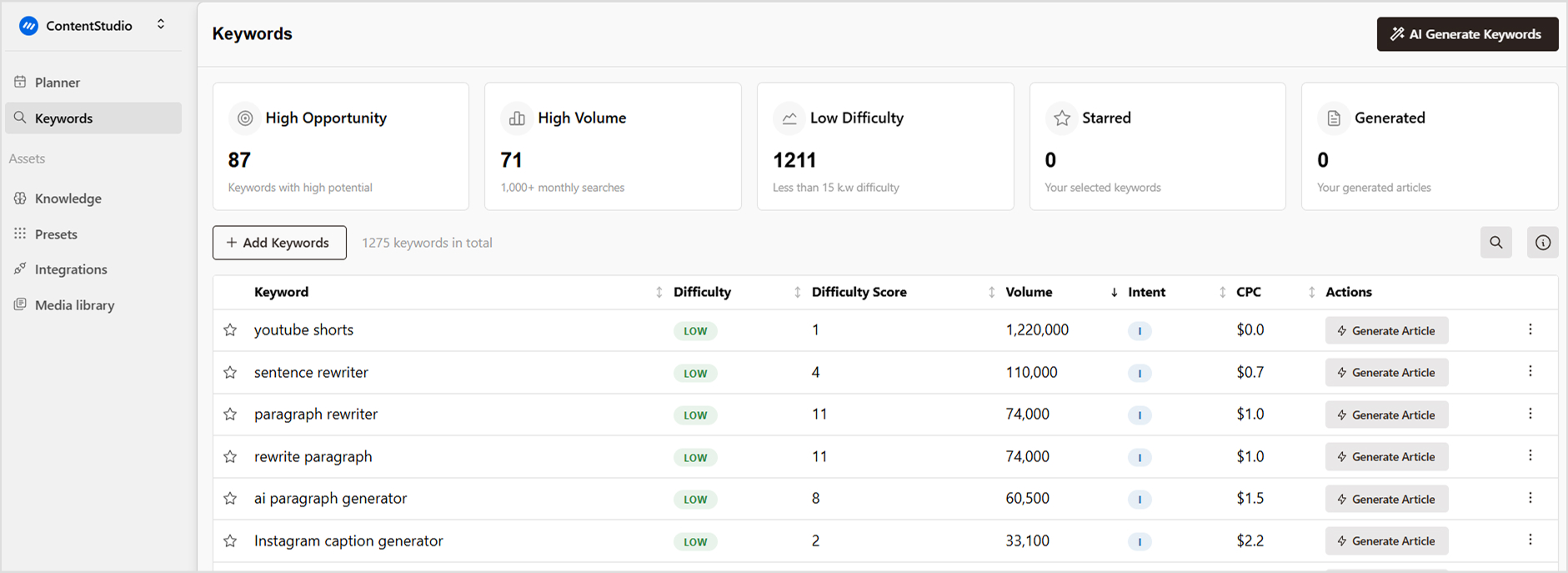
Outline your headings before writing
A key step in the blog post planning phase is to prepare an article outline before starting to write the piece. It wouldn’t hurt to sit back and write down the subheadings beforehand. Not only does it help create a flow in the article, but it also improves the quality of the draft.
Going all-in with your blog writing without planning won’t make the process faster – it would only make it worse when you have to go back and forth during the editing phase.
Also read: How to write blogs faster using AI: 6 steps to 10x your speed
Use a repeatable blog post structure
A practical way to write good blog posts fast is to come up with a pattern to follow. This repeatable, easy-to-understand method should determine the basic blog post structure, essential elements, and additional ingredients.
Here’s how you can create a reusable blog post structure to produce blog content at scale:
Title, intro, H2s, conclusion – keep it simple
The basic blog post structure includes a title, intro, H2s and H3s, and the conclusion. Most bloggers follow this structure as they write the title first, then include an intro, followed by the H2s and H3s, and finally end with a conclusion.
To write an effective blog post faster requires a pre-designed template to follow, and this blog post structure provides a blog template that fits in almost every niche.
Use bullet points and short paragraphs
Adding bullet points and breaking down the long paragraphs makes it easier for readers to consume the content. Large chunks of text or bulky paragraphs usually repel the readers. No wonder intelligent bloggers pay close attention to readability factors.
As far as the bullet points and short paragraphs are concerned, these are repeatable elements and work with every type of blog post.
Leave space for visuals and internal links
A tried-and-tested way of making a blog post engaging is by adding images and screenshots to it. Not only do visuals make content more appealing, but they also improve readers’ engagement.
The same goes for the internal links; some internal links, such as links to pillar pages, product/service pages, or free tool pages, are repeatable.
Also read: How to refresh an existing article in Contentpen?
Write in focused sprints, not long sessions
The writing process can be tiresome, so every writer has a different regimen to deal with such issues. The core point is how one can spice up things to regain focus. There are different approaches to staying focused, remaining motivated, and getting the job done:
Use a timer or the Pomodoro method
Time tracking software comes in handy in this regard. These apps or software don’t just track how much time you’re spending on a task, but they also report your overall productivity on a daily, weekly, or monthly basis. For instance, Clockify provides an extensive report, allowing users to analyze their monthly performance.
Moreover, users can try the Pomodoro method, which is a time management technique for improving productivity. According to this method, one should take a 5-minute break after every 25-minute work session and then a 30-minute break afterward.
Avoid editing while you write
One of the mistakes some writers make during the writing sessions is that they try to edit the content while writing it, which breaks the momentum and disrupts the flow. So, avoid editing the piece while you’re writing it and schedule an editing session later instead.
Finish a rough draft in one go
Taking breaks during the writing session is a way of refueling your energy. However, in some cases, writing the whole thing in one go can be helpful, especially if it’s a shorter assignment. For instance, if you’re writing a 500 to 600-word blog post for Medium, then it won’t hurt to finish a rough draft in one go.
Edit fast but effectively
Editing is a whole different ball game. However, honing in on the editing skill can be extremely helpful for a writer. The reason is that when writers edit their content, the overall quality of the content gets better before it goes to the editor. Here’s how a writer can edit fast and efficiently:
Cut fluff and tighten sentences
One of the essentials of effective and fast editing content is to cut the fluff and keep it concise, so that the message is delivered. When the sentences are clear, simple, and short, the content becomes more readable and engaging.
Check for grammar, flow, and formatting
Inspect the write-up for grammar mistakes, sentence structure errors, and content formatting for faster and effective editing. Most content editors check the content twice; first, they run it through a grammar checker and then analyze it manually.
Optimize for keywords and on-page SEO
Keywords are crucial to optimizing the content for on-page SEO. However, it is vital to add relevant, targeted keywords to ensure better placement in the SERP. Keep in mind that keywords aren’t wiped out during extensive editing.
These are some of the best tactics for editing fast and effectively.
Best tool to speed up blog writing
Blogging consistently is no easy job. From brainstorming fresh topics to researching keywords, structuring drafts, and polishing the final piece, it’s a process that takes hours, sometimes days. That’s why bloggers and marketers often turn to AI tools to cut blogging time.
But here’s the catch: most tools either focus on speed and compromise on quality, or deliver quality but slow you down. That’s where Contentpen steps in, striking the perfect balance between efficiency and well-crafted, optimized blogs.
Why choose Contentpen?
Contentpen is a powerful AI-writing tool that generates fully optimized articles in seconds. It combines keyword insights, SEO intelligence, and AI-powered writing to help you scale content without losing quality.
Key features of Contentpen
1. Keyword analysis
Built-in keyword research ensures your articles target the right terms and are SEO-optimized from the start.
2. AI-powered outlines and drafts
Contentpen generates structured outlines and full article drafts within seconds, eliminating the struggle of starting from scratch.
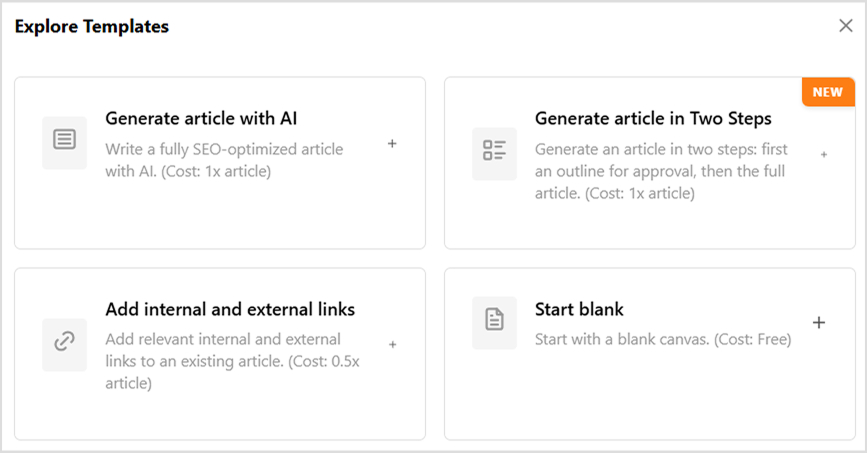
3. Bulk creation and team collaboration
Easily produce articles in bulk, manage approvals, assign tasks, and keep campaigns on track with a built-in calendar. If you need to create a blog in less than 10 minutes using content presets, Contentpen makes it possible.
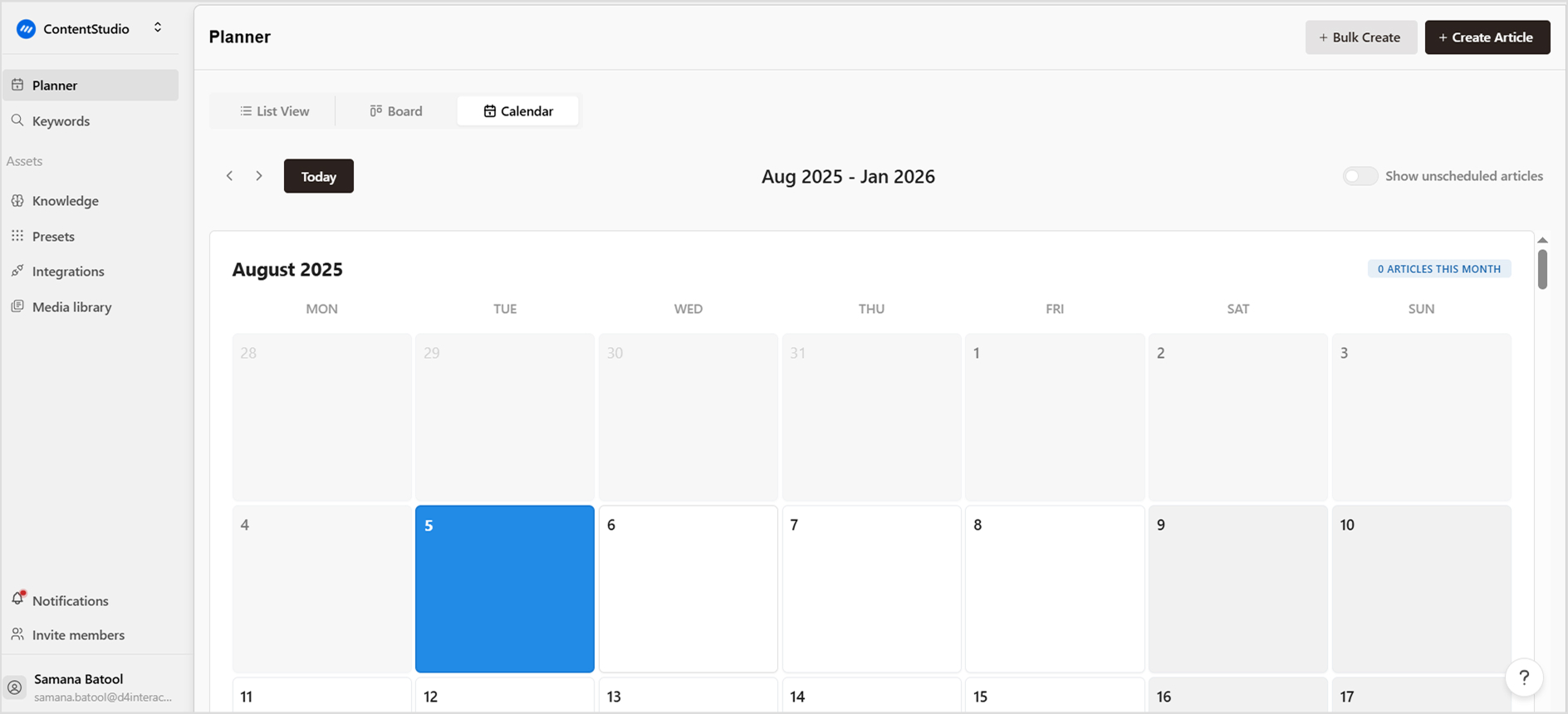
4. Presets for efficiency
Contentpen allows you to use presets tailored for different writing styles and formats. These presets help you save time, maintain consistency, and write faster.
Also read: How to use Contentpen presets to save time and write faster
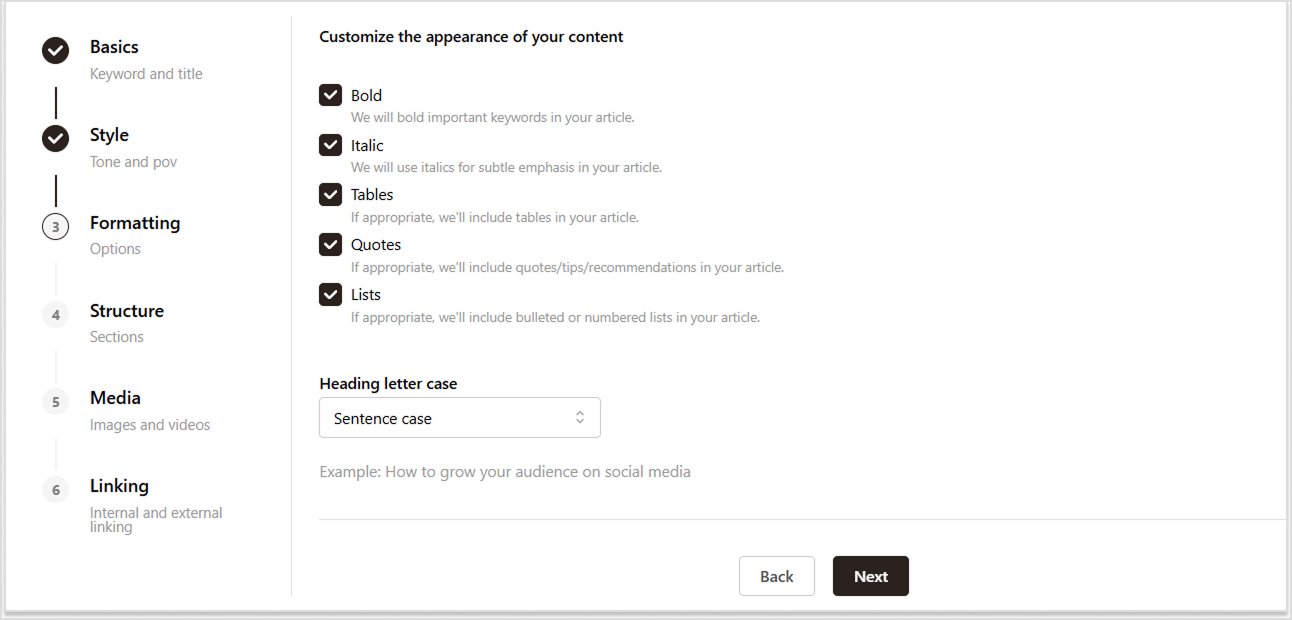
5. SEO-focused content creation
The tool creates articles designed to perform well in search engines, giving you an edge over manually written drafts.
6. Internal & external linking
Contentpen smartly inserts internal and external links, boosting your site’s authority and helping improve seo rankings without extra effort.
7. Brand voice
Ensure every piece of content reflects your unique brand voice with consistent tone, style, and messaging.
Conclusion
Writing blog posts fast doesn’t mean cutting corners; it means working smarter. By planning, outlining the blog structure, writing in focused sprints, and editing content with purpose, you create a system that saves time while keeping quality intact.
Think of it as building muscle: the more you follow this workflow, the easier and faster it becomes to produce blog posts that both engage readers and rank well.
So, the next time you sit down to write, don’t just stare at a blank page; plan your content outline first, then write content fast, and edit efficiently afterward.
Once you start implementing the strategy of writing a high-quality blog post fast, you’ll notice how much smoother and less stressful the process feels.
FAQs about writing blog posts fast
How long should a fast-written blog post be?
Most bloggers think the longer the blog post, the better it is. However, the length doesn’t guarantee the quality and effectiveness. A fast-written blog post can be anywhere between 800 and 1500 words long, as long as it’s answering the query perfectly.
Can I write high-quality content quickly?
Yes, it’s possible ot write high-quality content quickly. All you need is to utilize an AI-writing assistant like Contentpen to generate a first draft to work on and polish it further with human editing.
What’s the best way to start a blog post fast?
The best way to start a blog post fast is to build a structure of the blog post, which is also called a blog post outline. Once the outline is done, the blogger can follow the structure of the H2s, H3s, and H4s to write the complete blog post.
Should I use AI to speed up blog writing?
Absolutely! AI has become an essential part of the modern-day writing system. Utilize a powerful AI writing tool to brainstorm ideas and generate AI-based content within a few seconds.
You might be interested in...

The best Jasper AI alternatives: Honest, tested, and reviewed
Jasper AI has long been a popular choice among marketers and businesses as an AI writing assistant – and it’s easy to see why. For many teams, it was one of the first tools they adopted, delivering solid results in the early stages of AI-assisted content creation. However, as content needs have evolved – with […]
Jul 25, 2025

The ultimate list of SEO writing tools that actually improve rankings
SEO writing has come a long way from keyword stuffing to smart, data-driven strategies that drive results. Today’s best SEO writing tool supports the entire content workflow – from keyword research and SERP analysis to real-time content optimization. Whether you’re a content marketer, SEO strategist, or freelance writer, the right SEO content writing software can […]
Jul 2, 2025
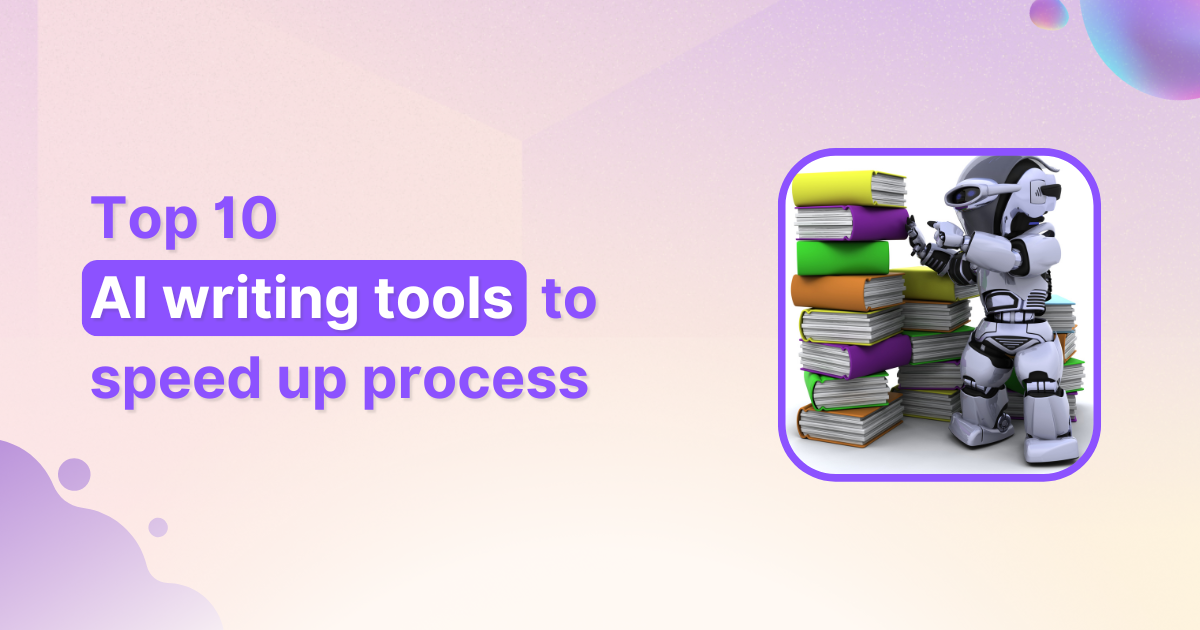
Top 10 AI writing tools to speed up your content creation
AI writing tools have transformed the way we create content – making it faster, easier, and more scalable than ever before. Whether you’re a blogger, marketer, or business owner, AI content writing tools and writing AI tools can save you time and deliver impressive results. In this list, we’ve rounded up the 10 best AI […]
Jun 16, 2025